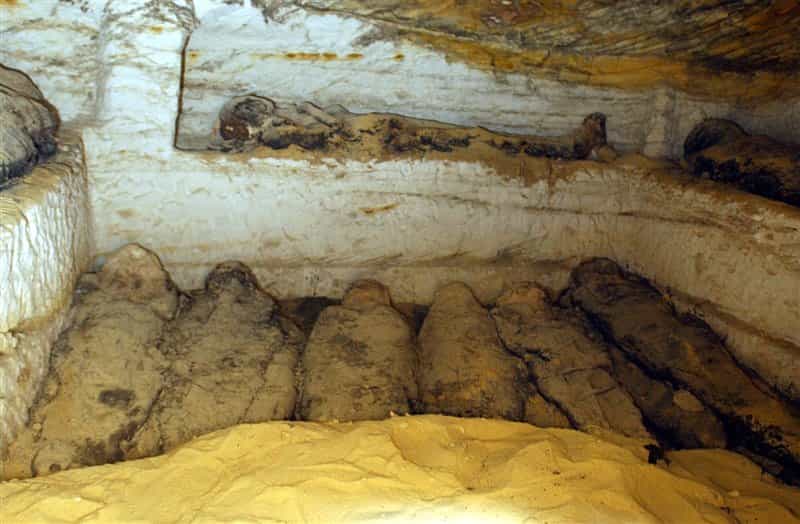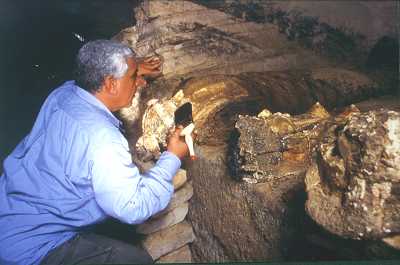In 1996, Egyptologist Zahi Hawass noticed impressive flashes from the bottom of a hole in an oasis in Egypt’s desert. This led to the discovery of several tombs containing mummies from the Greco-Roman period; they all had incredible golden decorations.

Greco-Roman mummies
The Valley of the Golden Mummies is located 15 minutes from El Bawiti, in the Bahariya Oasis, about 400 kilometers from Cairo.
Although there are traces of a Palaeolithic population in the area, it was during the Middle Kingdom that this green dot in the middle of the desert attracted the attention of the ancient Egyptian rulers. Trade routes and nomads converged there, becoming a defensive enclave of the western borders.
Bahariya flourished most especially from the 26th dynasty and after the arrival of Alexander the Great and the Ptolemies.
Most of the mummies discovered relate to the Greco-Roman period (between the 4th century BC and the 4th century AD) when the oasis served as a center for exporting wine to the rest of the Nile Valley

Egyptian and Greek elements
Mummification in the Greco-Roman era emphasized the mummy’s external appearance. The corpse, once emptied, was reinforced with sticks or reeds and covered with large amounts of resin.
“You could still smell the resin used,” Hawass notes, recalling the moment he entered the tombs. Later, they would wrap the mummy in a linen bandage formed of intricate geometric patterns that gave it a sense of depth.
Mummies belonging to the less favored classes of the oasis have been found in very poor states of preservation—they were wrapped carelessly during mummification and were not deposited inside any sarcophagus in the tombs.
Anthropomorphic sarcophagi made of terracotta have also been found, and sometimes poignant elements appear. For example, a female mummy whose face had been cast to the side so she could contemplate the mummy of her husband, lying next to her, who had died earlier.

Tombs and grave goods
Most of the tombs discovered have a similar structure. There are access steps leading to a small room where the body of the deceased was received
The tombs of Ta-Nefret-Bastet, Ped-Ashtar, and Thaty are from the same period and were looted during Roman times and were later reused.
Coins from the Greco-Roman period have also been found, one of them from the reign of the famous Cleopatra VII.
Among the most notable finds is the limestone sarcophagus that hid the mummy of Bahariya’s 26th dynasty governor, Djed-Khonsu-euf-Ankh, and the mummies of his wife Nesa II, his brother, and his father.
The Valley of the Golden Mummies is one of the most important discoverable sites of Egypt’s Greco-Roman period, and its study is still far from over. In the words of Hawass, the excavation in the Bahariya area could last decades and is expected to discover more than 10,000 mummies during its course